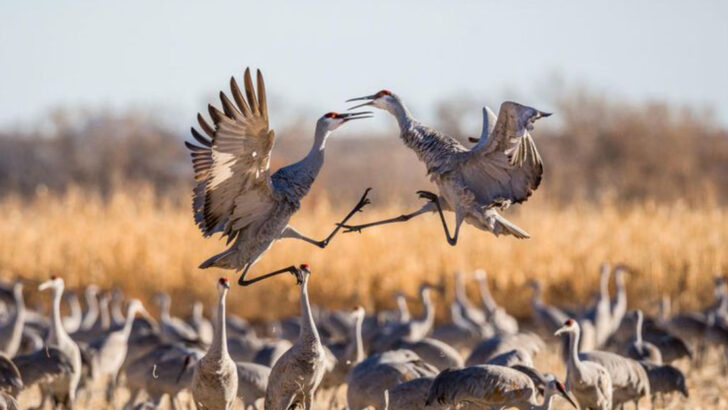Wyoming’s plains aren’t just wide open spaces—they are wild, untamed realms where creatures roam free, carrying the spirit of the American West.
From the thunderous herds of bison to the stealthy mountain lions that vanish into the shadows, Wyoming is home to animals that embody the rugged beauty and fierce independence of this land.
These wild residents aren’t just survivors—they are the heartbeat of this ecosystem, each with its own set of traits and behaviors that make it truly unique.
Come with us as we explore 23 wild animals that call Wyoming home, and discover what makes them masters of this vast, untamed frontier.
American Bison
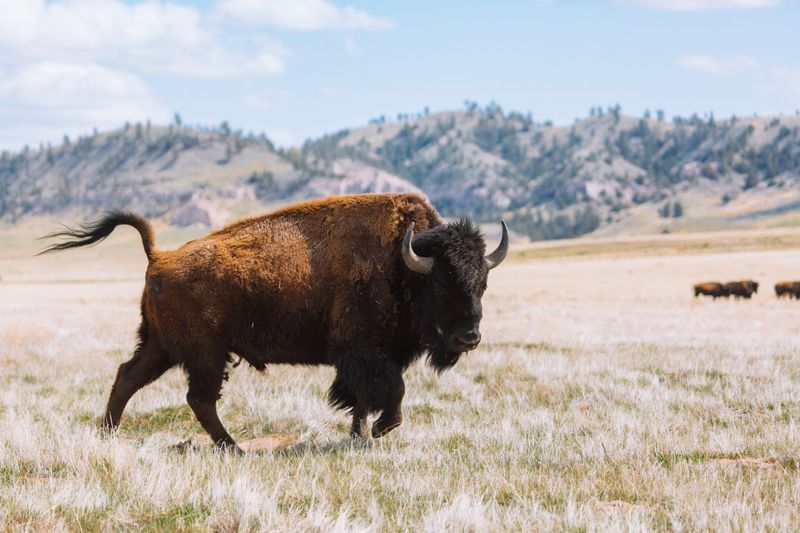
The American Bison, often referred to as the buffalo, is a symbol of the Great Plains. With its massive frame and shaggy coat, the bison commands respect. These herds are known for their migratory nature, moving across vast distances to find fresh grazing grounds.
Their thick fur serves as insulation against the harsh Wyoming winters, and their strong, curved horns are tools for both defense and foraging. Despite their size, bison can run at speeds up to 35 mph.
Their presence on the plains is a testament to resilience and adaptability, key traits in such a wild environment.
Pronghorn Antelope
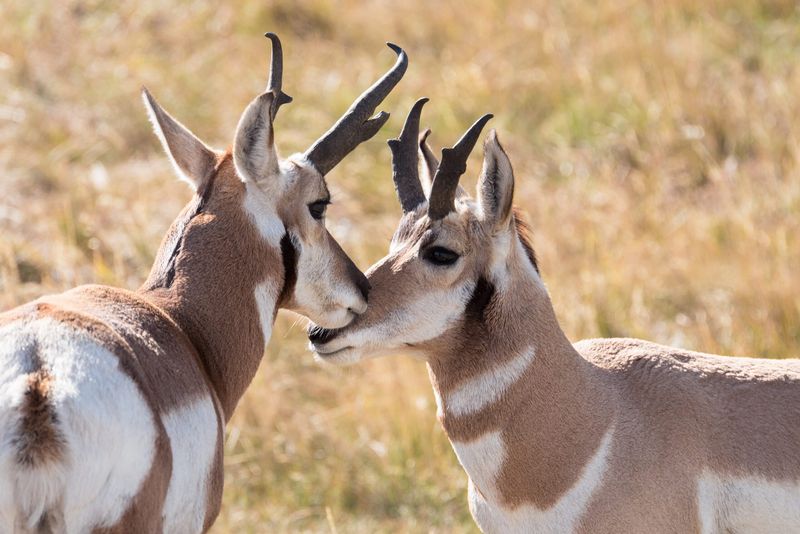
Pronghorn antelopes are the speedsters of the plains, capable of reaching speeds up to 55 mph. These swift creatures have evolved to outrun predators, making them a fascinating study of speed and agility.
Their large eyes provide excellent vision, crucial for spotting danger from afar. The pronghorn’s distinctive white and tan coloring aids in camouflage amidst the grassy plains.
Known for their impressive stamina, pronghorns can maintain high speeds over long distances. They are a true marvel of nature’s engineering, showcasing how evolution shapes survival tactics.
Elk
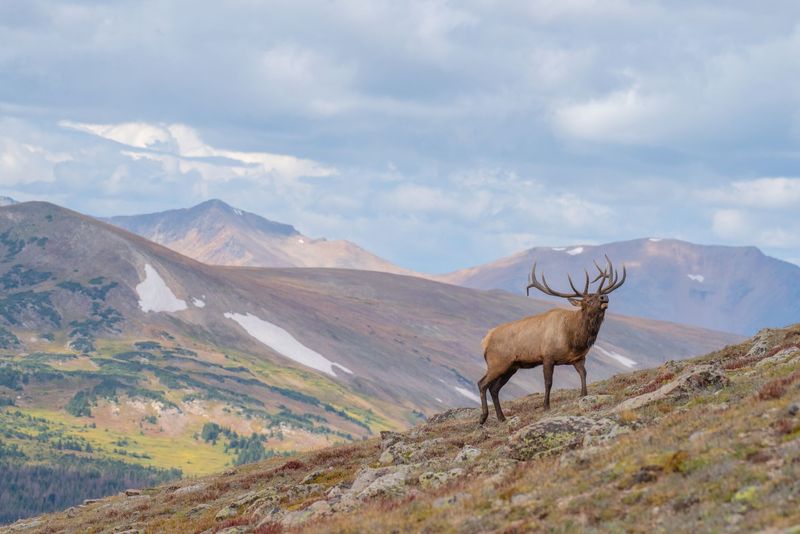
Elk are a ubiquitous presence in Wyoming, often spotted in large herds. Their imposing antlers, which can span up to four feet, are a spectacular sight during the fall rut.
Males, known as bulls, use these antlers to compete for mates, clashing in dramatic displays of strength. Elk are versatile herbivores, thriving on a diet of grasses, leaves, and bark.
Their haunting bugle call echoes across the plains, a sound synonymous with the wilderness. Elk embody the untamed essence of the West, a reminder of the raw beauty of nature.
Grizzly Bear
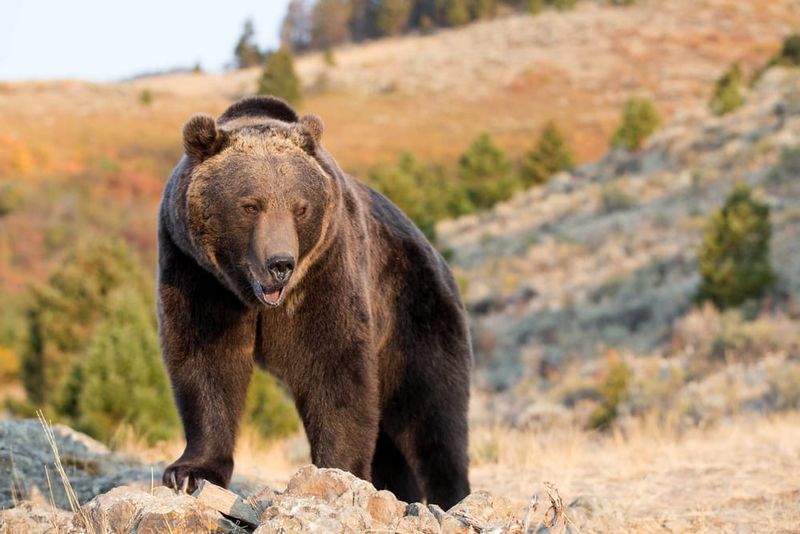
Grizzly bears are the formidable giants of the wild. With their distinctive hump and long claws, they are built for strength. These solitary creatures roam vast territories, often found in forested areas.
Grizzlies are omnivorous, with diets ranging from berries to large mammals. Their ability to stand on their hind legs allows them to survey their surroundings, a behavior often mistaken for aggression.
In reality, grizzlies are primarily cautious and avoid human interaction. Observing a grizzly in its natural habitat is a privilege, offering a glimpse into the primal world of the wild.
Mountain Lion
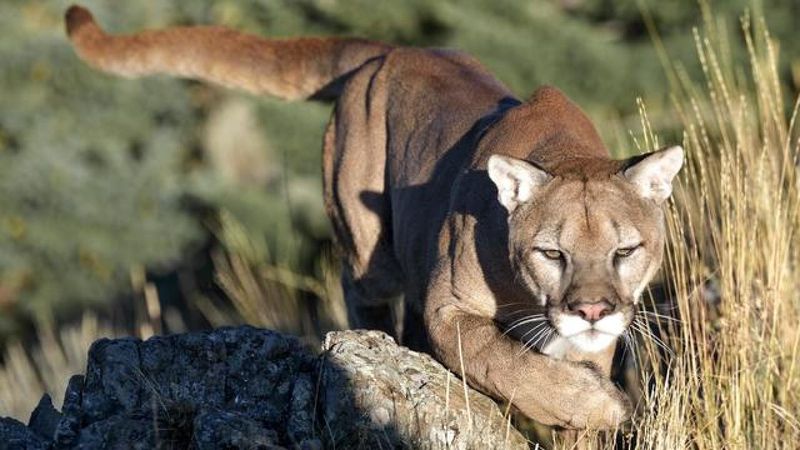
Mountain lions, or cougars, are the stealthy predators of the Rockies. Known for their elusive nature, these cats are masters of camouflage and stealth.
They prefer rugged terrains where their agility can be fully utilized. With powerful hind legs, they can leap distances of 15 feet or more, making them exceptional hunters.
Mountain lions primarily hunt deer but are adaptable to various prey. Spotting one is a rare and thrilling experience, a reminder of the unseen forces at play in the wild.
Bighorn Sheep
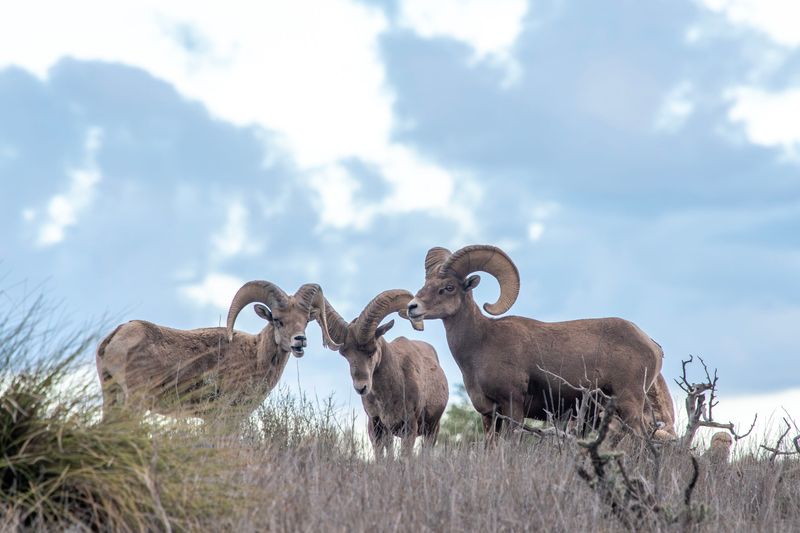
Bighorn sheep are iconic inhabitants of Wyoming’s mountainous regions. Recognizable by their large, curved horns, these sheep are built for climbing steep, rocky terrain.
Their surefootedness is legendary, allowing them to traverse cliffs with ease. Males engage in head-butting contests, producing unmistakable echoes across the mountains.
Primarily grazing on grasses and shrubs, bighorn sheep play a crucial role in their ecosystem. Observing them in their natural habitat offers insight into the dynamics of animal behavior and survival.
Wolf
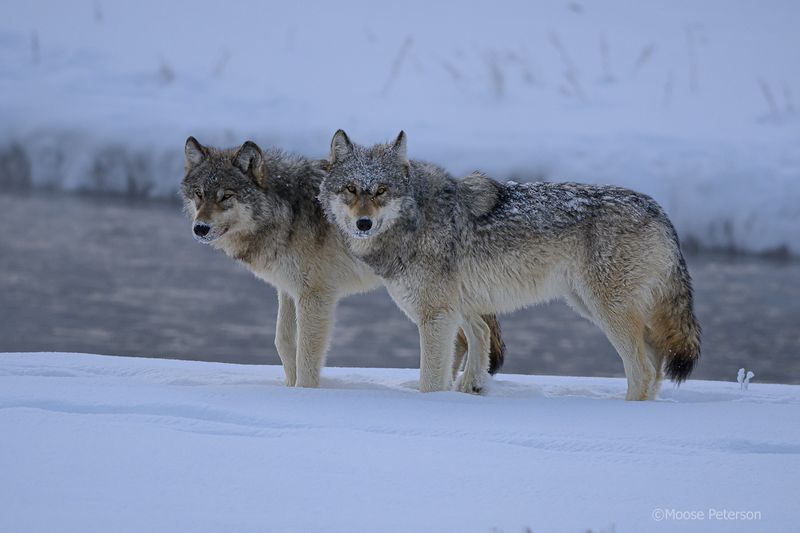
Wolves are the ultimate symbol of wilderness, roaming the vast expanses of Wyoming in packs. Their social structure is complex, often led by an alpha pair that guides the group.
Wolves communicate through a series of howls, which can be heard echoing through the night. These predators play a vital role in maintaining the balance of their ecosystem by managing prey populations.
The reintroduction of wolves to Wyoming has been a conservation success story, highlighting the interconnectedness of all species within the ecosystem.
Moose
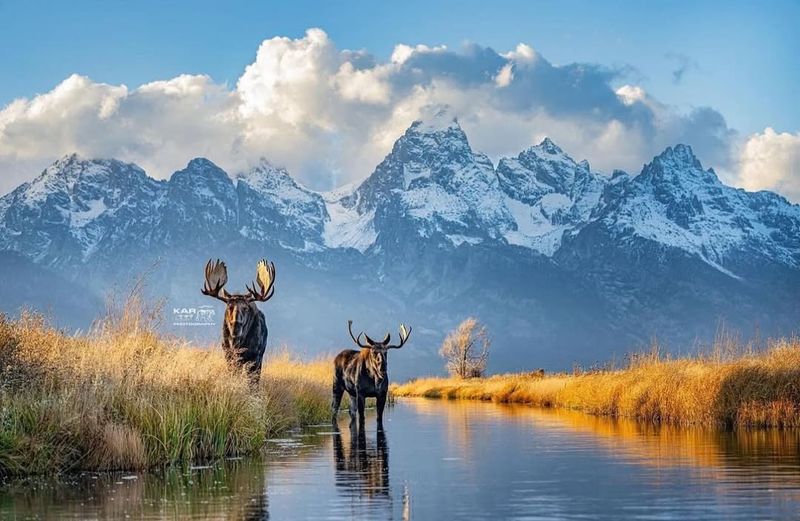
Moose are the gentle giants of Wyoming’s waterways. With their long legs and broad antlers, they are unmistakable. Despite their size, moose are excellent swimmers, often found in lakes and rivers.
Their diet consists of aquatic vegetation, and they can submerge completely to reach underwater plants. Moose are generally solitary, except during mating season when bulls compete for mates.
Their presence in the forest adds to the rich tapestry of life, and spotting a moose is a memorable experience for any wildlife enthusiast.
Bald Eagle
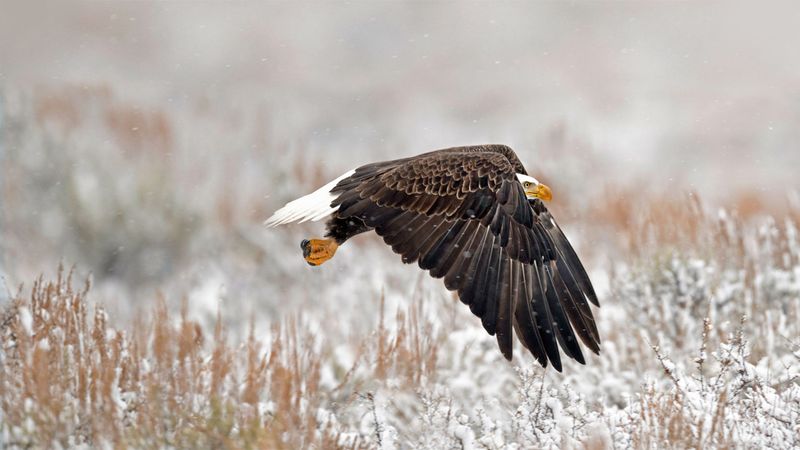
The bald eagle, with its striking white head and tail, is a symbol of freedom and grace. These raptors are often seen soaring above Wyoming’s open landscapes, scanning for prey with keen eyesight.
Their diet primarily consists of fish, but they are opportunistic feeders, also taking small mammals and carrion. Bald eagles build large nests, often in tall trees near water.
Their majestic flight and piercing gaze are a testament to their status as apex predators. Witnessing a bald eagle in flight is an awe-inspiring experience, a true emblem of the wild.
Coyote
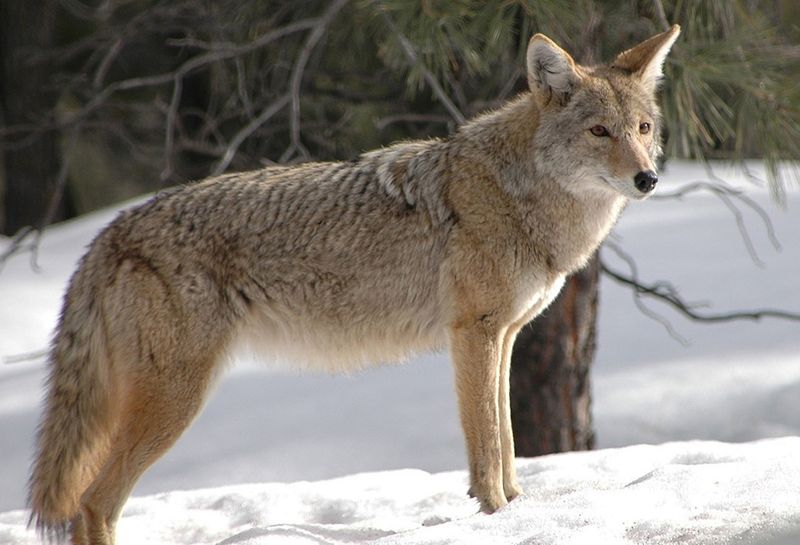
Coyotes are the adaptable survivors of the wild, known for their intelligence and cunning. These omnivorous canines thrive in a variety of habitats across Wyoming, from deserts to forests.
Their haunting howls at dusk are a signature sound of the wilderness, communicating with pack members or marking territory. Coyotes are solitary hunters but can form loose packs when necessary.
Their ability to coexist with humans makes them a fascinating study in adaptability and resilience, embodying the spirit of survival against the odds.
Red Fox
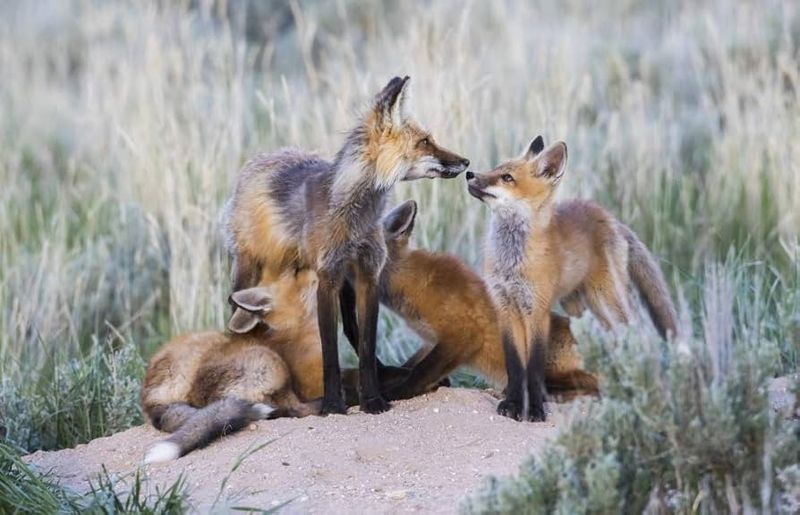
Red foxes are the charismatic tricksters of the animal kingdom. Known for their vibrant fur and bushy tails, these clever animals are a common sight in Wyoming’s diverse habitats.
Foxes are solitary hunters, primarily preying on rodents, birds, and insects. Their playful nature is often observed during hunting as they pounce with precision.
Red foxes are highly adaptable, thriving in both natural and urban environments. Their presence enriches the ecosystem, offering a glimpse into the intricate balance of predator and prey dynamics.
Mule Deer

Mule deer, with their large, mule-like ears, are a common sight in Wyoming’s valleys and woodlands. These gentle herbivores are known for their graceful movements and strong sense of smell.
Their diet consists of leaves, twigs, and grasses, and they often migrate between summer and winter ranges. Mule deer exhibit a unique bounding leap known as ‘stotting,’ a behavior used to escape predators.
Their serene presence is a reminder of the tranquility nature offers, a snapshot of calm in the bustling life of the wild.
Black Bear
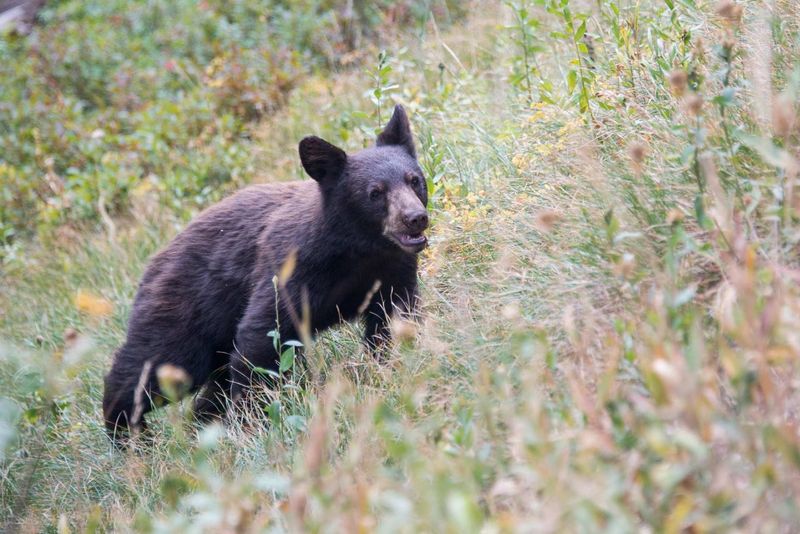
Black bears are the opportunistic omnivores of Wyoming’s forests. Despite their name, their fur color can range from jet black to cinnamon brown.
These bears are skilled climbers, often ascending trees to escape danger or find food. Black bears have an acute sense of smell, aiding them in locating a variety of food sources.
Their diet is diverse, including fruits, nuts, insects, and small mammals. Black bears play a vital role in seed dispersal, contributing to forest regeneration and biodiversity.
Peregrine Falcon
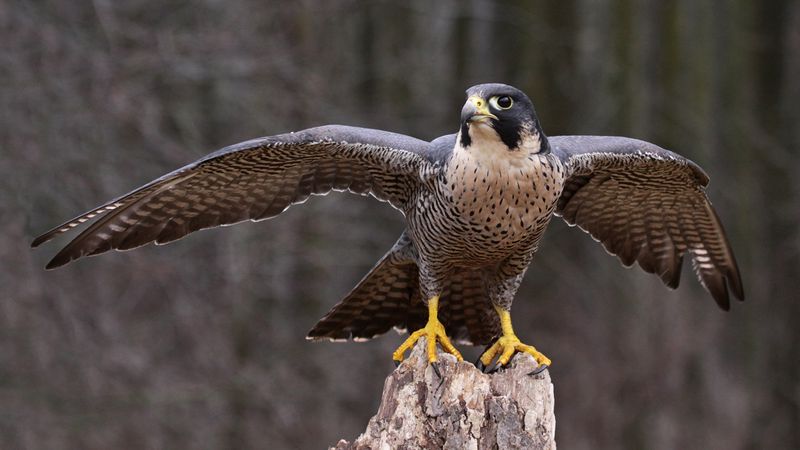
The peregrine falcon, renowned for its speed, is the fastest bird in the world. Known to reach speeds of over 240 mph during a hunting dive, it’s a marvel of aerodynamic engineering.
These birds are often seen nesting on cliff faces, using their keen eyesight to spot prey from great heights. Their diet mainly consists of other birds, which they catch mid-flight.
The peregrine falcon’s grace and power are awe-inspiring, showcasing the incredible adaptations of avian life in Wyoming’s wild.
American Badger
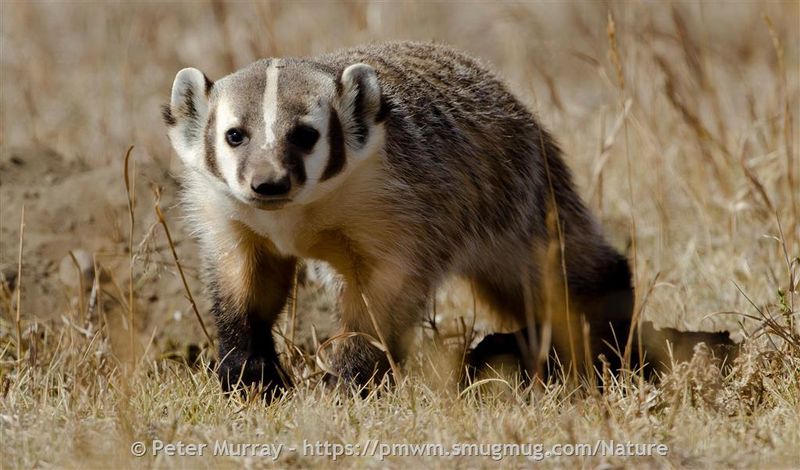
American badgers are the determined diggers of the plains, known for their powerful build and tenacity. With a striking black and white face, they are adept at burrowing and hunting underground.
Badgers primarily feed on small mammals, such as gophers and ground squirrels, using their strong claws to dig through the earth. They are solitary creatures, often seen in open grasslands.
Their role as predators and burrowers makes them important in controlling rodent populations, contributing to the ecological balance of their habitat.
Great Horned Owl
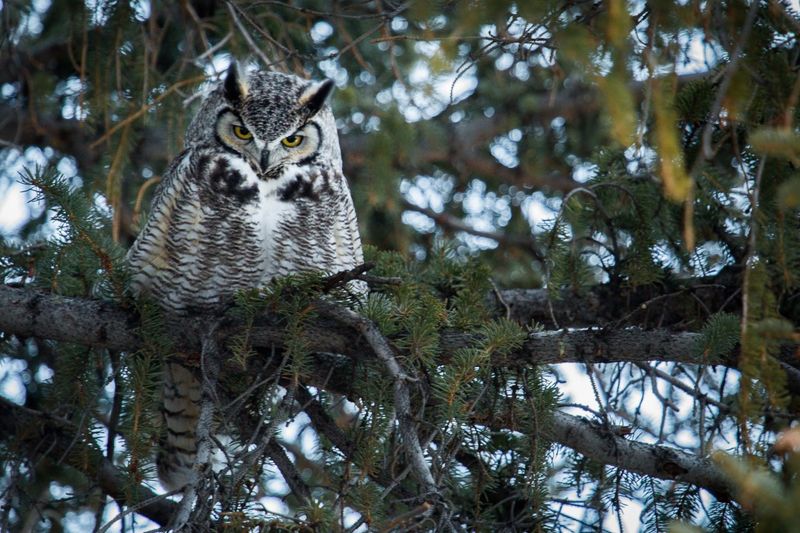
The great horned owl, with its distinctive tufts or “horns,” is a master of stealth and strength. Its piercing yellow eyes and deep hoots are well-known in the forests and plains of Wyoming.
These owls are powerful hunters, preying on a wide variety of animals, from rodents to larger birds. Their exceptional night vision and silent flight make them formidable nocturnal predators.
The presence of a great horned owl is a testament to the rich avian diversity of the region, adding to the mystique of Wyoming’s wild.
River Otter
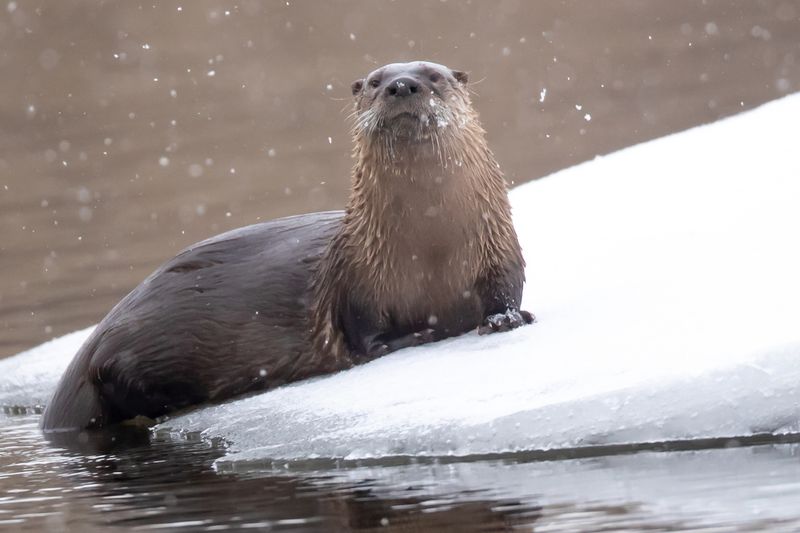
River otters are the playful acrobats of Wyoming’s waterways. Known for their sleek bodies and agile movements, they are expert swimmers, often seen gliding effortlessly through rivers.
These otters feed on fish, amphibians, and invertebrates, using their sharp teeth and strong jaws to break shells. Their playful behavior, such as sliding on mud or snow, is a delight to observe.
River otters are indicators of a healthy aquatic ecosystem, reflecting the purity of their environment through their presence and activities.
Beaver
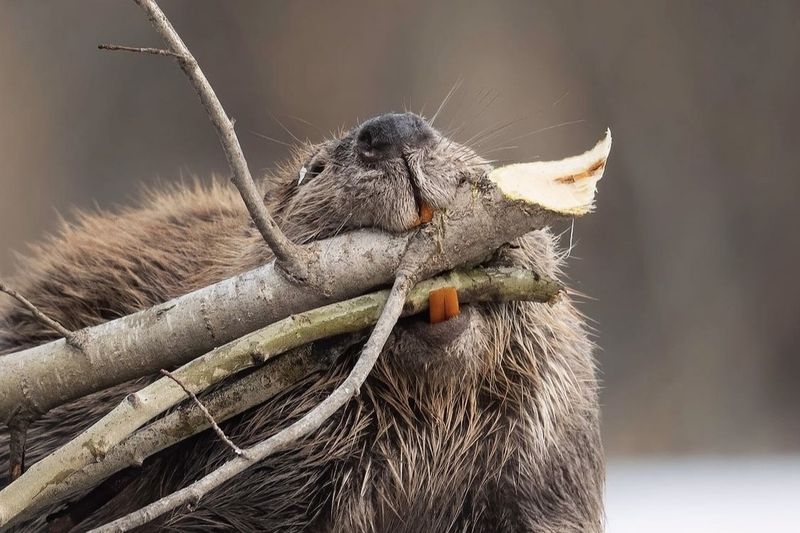
Beavers are the industrious engineers of the animal world, known for their extraordinary dam-building skills. With large, flat tails and sharp teeth, they are well-equipped for their architectural endeavors.
These mammals construct elaborate lodges and dams, altering waterways to create ponds that benefit a myriad of species. Beavers are primarily nocturnal, working tirelessly through the night.
Their activities foster biodiversity, providing habitats for fish, birds, and other wildlife. Observing a beaver in action is witnessing nature’s ingenuity at its best.
Bobcat

Bobcats, with their tufted ears and spotted coats, are the elusive hunters of the forest. These solitary cats are superbly adapted to a life of stealth and agility.
Primarily nocturnal, bobcats rely on their keen senses and camouflage to hunt small mammals and birds. Their ability to move silently through dense underbrush is a testament to their predatory prowess.
Encountering a bobcat is a rare treat, offering a glimpse into the secretive world of these wild felines, and highlighting the diversity of Wyoming’s wildlife.
White-tailed Deer
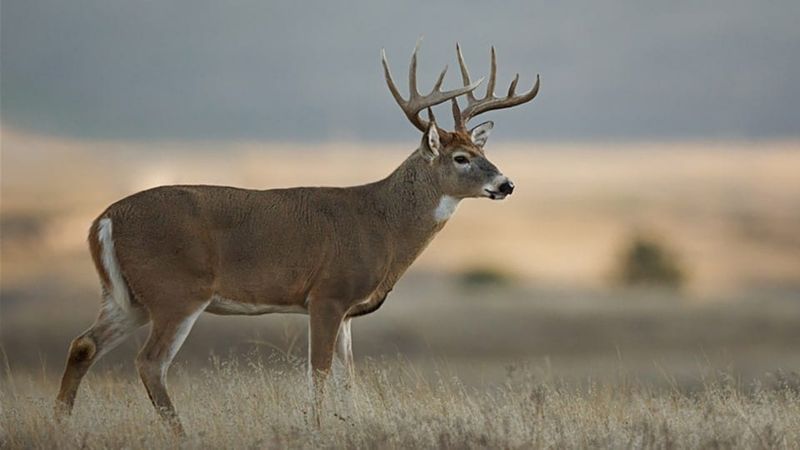
White-tailed deer are the graceful symbols of the American wilderness, known for their distinctive white tails that flash as they bound away from danger.
These deer are highly adaptable, thriving in a variety of habitats from forests to grasslands. They are primarily browsers, feeding on leaves, twigs, and fruits.
The presence of white-tailed deer is a hallmark of healthy ecosystems, and their gentle demeanor adds charm to the landscape. Observing them in their natural habitat is a serene experience.
Sandhill Crane
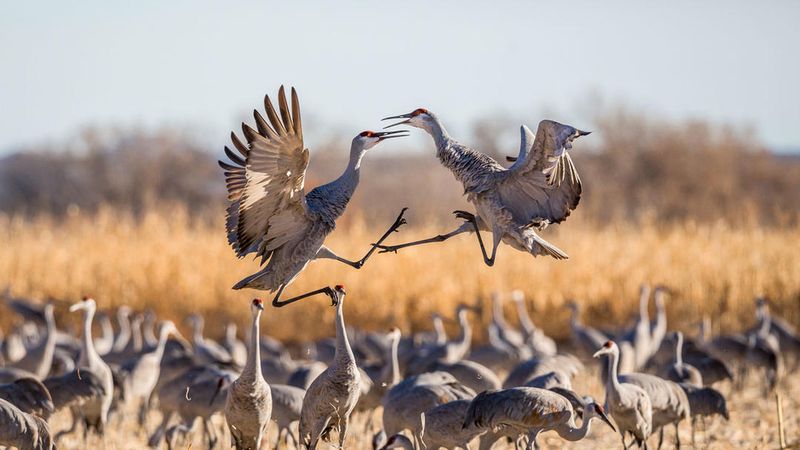
Sandhill cranes are the elegant dancers of the marshlands, known for their graceful movements and resonant calls. With long legs and necks, they are easily recognized as they wade through wetlands.
These cranes are omnivorous, feeding on a diet of grains, insects, and small vertebrates. Their courtship dances, featuring elaborate leaps and calls, are a spectacle of nature’s pageantry.
The migration of sandhill cranes across Wyoming is a seasonal wonder, drawing birdwatchers eager to witness their majestic presence and hear their melodic calls.
Jackrabbit
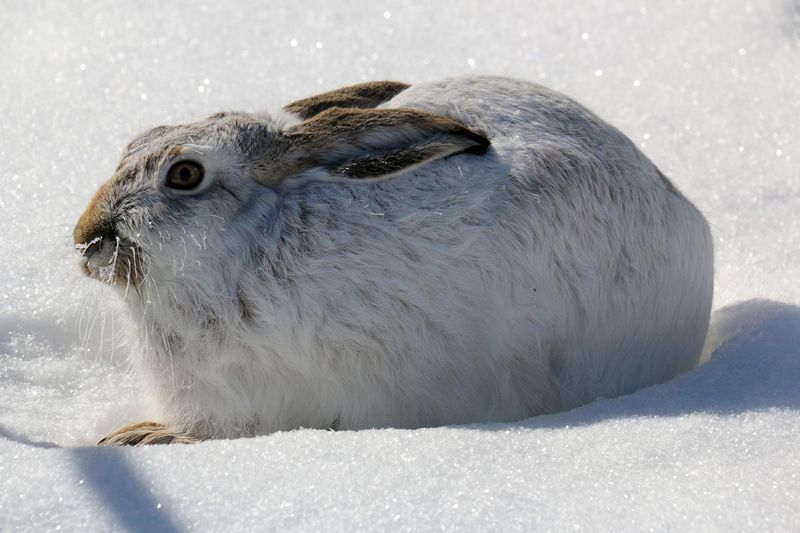
Jackrabbits are the agile sprinters of the desert, known for their long ears and powerful hind legs. These hares are adapted to arid environments, using speed to evade predators.
Their long ears help regulate body temperature and detect distant sounds, crucial for survival in open landscapes. Jackrabbits primarily feed on grasses and other vegetation, utilizing their keen sense of smell to find food.
Their presence in the desert is a testament to adaptation and resilience, embodying the spirit of life in challenging conditions.
Burrowing Owl
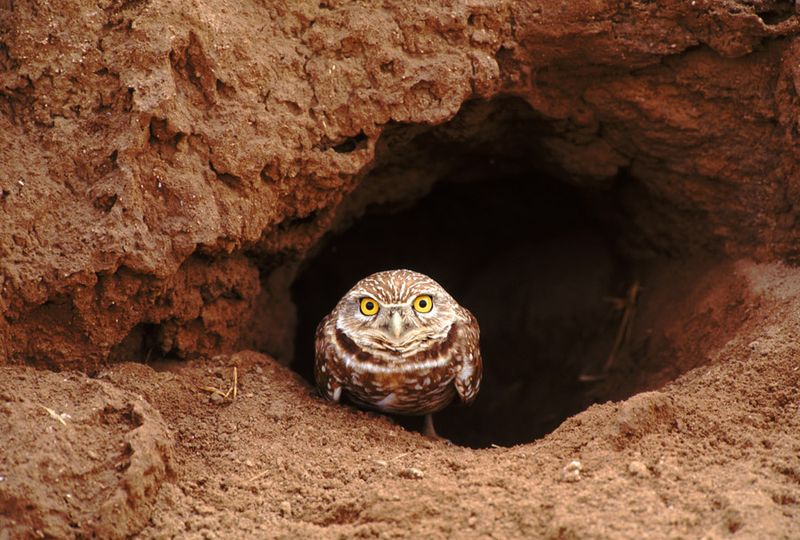
Perched low to the ground, the burrowing owl is a charming sight on the plains of Wyoming. Unlike other owls, this species makes its home in abandoned burrows, peering out with curious, wide eyes. Its petite stature and distinctive spotted plumage make it an adorable yet formidable predator.
This diurnal owl is active during the day, a rarity among its nocturnal relatives. It feeds on insects and small mammals, relying on its keen eyesight and swift flight to catch prey. The burrowing owl plays a crucial role in controlling insect populations, promoting a balanced ecosystem.
Intriguingly, the burrowing owl often shares its home with prairie dogs, creating a unique interspecies relationship where both parties benefit.

